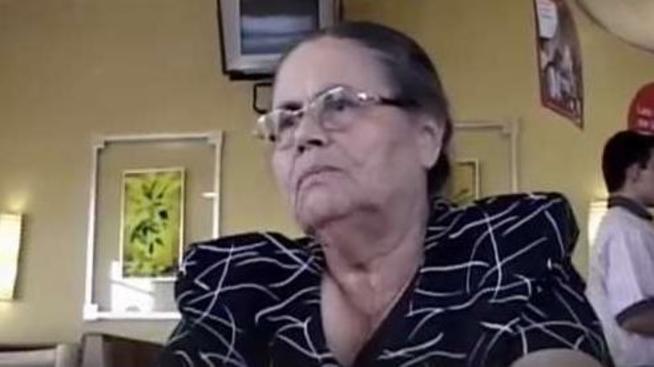by David Bacon
Washington State today is ground zero in the effort to hold back the massive use of agricultural guest workers by U.S. growers, and to ensure that farmworkers, both those living here and those coming under the H-2A visa program, have their rights respected. For a second year, on Aug. 4 workers and their supporters marched 14 miles in 90-degree heat through berry fields just below the Canadian border, protesting what they charge is widespread abuse of agricultural labor.
“Farmworker families have been living and working in local fields since the early 1950s,” according to Rosalinda Guillén, director of Community to Community, a farm worker organizing and advocacy group in Whatcom County. “But we’ve seen a big increase in growers’ use of the H-2A guest worker program in the last few years, and it’s had a huge impact on working conditions in the fields. We’ve had to feed guest workers who come to us hungry, fight to get them paid their wages, and help them deal with extreme work requirements. At the same time, our local workers find they’re not being hired for jobs they’ve done for many seasons.”
At dawn on Aug. 4, 200 marchers gathered in front of the immigration detention center in Ferndale, about three hours north of Seattle. Before starting the 14-mile peregrination, Guillen told the crowd that most of the immigrants detained there, and later deported, are farmworkers. “The Trump administration is targeting our local community, deporting people who have been living here for years,” she charged. “Then growers complain there aren’t enough workers, and begin using the H-2A program to bring in guest workers. It is a vicious revolving door of exploitation.”
According to the U.S. Department of Labor’s National Agricultural Workers Survey, there are about 2.5 million farmworkers in the U.S., about three quarters of whom were born outside the country. Half are undocumented and the rest are visa holders or people born in the U.S.
Last year growers were certified to bring in 242,762 H-2A workers – a tenth of the total workforce and a number that in just four years has increased from 139,832.
In 2017, Washington State growers were given H-2A visas for 18,796 workers, about 12,000 of whom were recruited by WAFLA (formerly the Washington Farm Labor Association, a H-2A labor contractor). “We predict growers will request more than 30,000 H-2A workers during 2019,” according to Washington Employment Security Department Commissioner Suzi LeVine.
The department estimated that 97,068 farm workers were employed in Washington State in 2016, so the projected number of H-2A workers would be a third of the entire workforce.
At the same time as H-2A employment is rising, deportations are increasing. The Trump administration deported 256,000 people in 2018, just slightly more than the number of people brought to the U.S. under H-2A visas. Local deportations are increasing as well in Washington. In August last year 16 people were arrested and held at the Ferndale center. Half were deported immediately, and others were charged bail as high as $18,000 to be released pending hearings. A month earlier 19 others had also been arrested for deportation.
Stories are common, according to C2C, of people stopped for traffic violations, and then held for detention by immigration authorities. In 2017, Gov. Jay Inslee signed an executive order barring state agents from helping to enforce federal immigration laws in most cases, ordering them not to ask about immigration status. Nevertheless, immigration detention centers are scattered around the state, including one of the nation’s largest in Tacoma, three hours south of Whatcom County, where the GEO Group holds around 1,500 people.
Protesting Exploitation at Crystal View Raspberry Farm
After leaving the Ferndale detention center, people walked north for four hours, arriving at the Crystal View Raspberry Farm. There they stopped to hold an informal hearing to highlight the decision by the farm’s owners to bring in 80 guest workers for this year’s blueberry harvest.
Growers recruit H-2A workers every year from other countries, mainly Mexico. Companies using the H-2A program must apply to the U.S. Department of Labor, listing the work, living conditions and wages workers will receive. The company must provide transportation and housing. Workers are given contracts for less than one year, and must leave the country when their work is done. They can only work for the company that contracts them, and if they lose that job they must leave immediately.
The H-2A program has its roots in the notorious “bracero” program, which brought workers from Mexico in extremely exploitative conditions starting in 1942. At its height in 1954 about 450,000 workers were brought in by growers, and in the same year over a million people were deported – the same “vicious revolving door” described by Guillen. Although the program was abolished in 1964, the H-2 visa on which it was based was never eliminated. In 1986 an organized farm labor importation program began again, and the H-2A visa was created. It has been growing ever since.
In August last year, about 60 Crystal View workers, brought from Mexico and Guatemala under H-2A visas, went on strike to protest the non-payment of their wages. They reached out to Community to Community (C2C) and Washington’s new farm worker union, Familias Unidas por la Justicia, looking for help. Workers told C2C organizer Edgar Franks they’d been threatened that if they didn’t work fast enough they’d be fired and sent back home. “They didn’t feel safe reaching out to anyone because of the threats,” he said. Workers were isolated because they lived on the farm property, miles from the nearest town, and had no cars or transportation of their own.









